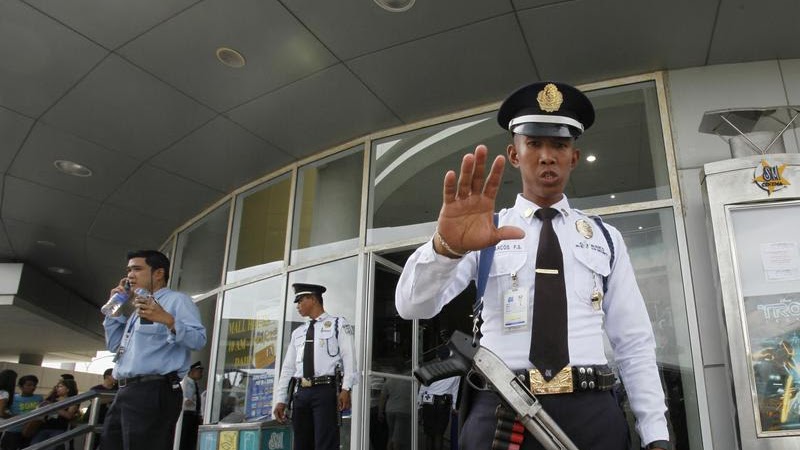The Development Bank of the Philippines (DBP; Filipino: Bangko sa Pagpapaunlád ng Pilipinas; Spanish: Banco de Agricola y Hacienda de Filipinas, Banco de Desarollo de Filipinas) is a state-owned development bank headquartered in Makati, the Philippines.
It is the seventh-largest bank in the Philippines in terms of assets, and is the second-largest state-owned bank, next only to Landbank. It is also one of the largest government-owned and controlled corporations (GOCCs) in the Philippines.
Core functions
DBP services various sectors of Philippine society, from farmers to businessmen. Although the Philippines has an economy largely dependent on agriculture (something that Landbank addresses), DBP aims for national development through financing the various businesses and economic sectors that keep the Philippine economy afloat. Like Landbank, it provides the services of a regular universal bank; however, it is officially classified as a "specialized government bank" with a universal banking license.
History
DBP's history can be traced back to the Commonwealth Era. In 1935, the National Loan and Investment Board (NLIB) was created to coordinate and manage the various government trust funds such as the Postal Savings Fund and the Teacher's Retirement Fund. In 1939, the NLIB was abolished and its functions were transferred to a new body, the Agricultural and Industrial Bank (AIB).
AIB continued operations until the outbreak of World War II. After the war, in 1947, the AIB was abolished and the Rehabilitation Finance Corporation was formed in its place by Republic Act No. 85, absorbing the powers and functions of the AIB. The RFC provided credit facilities for the development of agriculture, commerce and industry and the reconstruction of properties damaged by the war. In 1958, the RFC was reorganized into the modern-day DBP, reflecting that since reconstruction was largely finished, the RFC can venture into other fields.
With an initial capital of 500 million pesos, DBP set to work on expanding its facilities and operations to accelerate efforts on national economic development. It established a nationwide branch network and tapped local and foreign resources to complement its capital. It also borrowed money directly from international finance institutions. While this strategy helped accelerate capital formation and employment, especially in the countryside, the strategy eventually proved to be disastrous. By the time of Ferdinand Marcos, DBP's viability was undermined by an increasing number of non-performing accounts following a 1970s recession.
After the ouster of Marcos and the election of Corazon Aquino as president, she issued Executive Order No. 81, which reorganized the bank and gave it a new charter. All non-performing assets and liabilities were subsequently transferred to the government on June 30, 1986 and led to DBP forming a program to strengthen its institutions, such as a thorough revision of the credit process and a training program for the intensive implementation of new lending thrusts. Likewise, DBP reopened its lending windows for housing, agriculture and SMEs.
In 1995, DBP became a universal bank when it was granted its universal banking license, and three years later, had its charter revised. Under the revised charter, DBP's authorized capital would increase from five billion pesos to 35 billion pesos and led to the creation of the posts of President and CEO.
Organizational structure
The DBP Head Office in Makati exercises control and supervision of all DBP branch offices throughout the Philippines. The Board of Directors decides on policy matters to be carried out by the President and Chief Executive Officer. The President delegates policy and administrative directives to Executive Vice Presidents and Senior Vice Presidents manning specialized Departments of the bank. The Managers and Assistant Managers supervise the Division Chiefs in implementing daily tasks handled by rank-and-file personnel.
Key officials
As a state-owned financial institution, the Philippine President carries the power of appointing key officials of the bank, including the Chairman of the Board, the President and Chief Executive Officer, the Directors, and the Chief Legal Counsel. Past DBP presidents were former cabinet secretaries, corporate managers, economists, and international finance executives.
As of January 2013, the key officials of the bank include:
- Jose A. Nuñez, Jr. - Chairman, Board of Directors
- Gil A. Buenaventura. - President and Chief Executive Officer
Subsidiaries and affiliates
DBP is divided into the following subsidiaries and affiliates:
- Al-Amanah Islamic Investment Bank of the Philippines
- DBP Data Center
- DBP Insurance Brokerage, Inc.
Ownership
- Government of the Philippines: 100%
Competition
DBP competes in bank marketing against the largest commercial banks such as Metrobank, BPI, BDO Universal Bank and Philippine National Bank. Outside the Metro Manila area, depending on the situation, it either competes against or complements the other banks in the area.
On the other end of the spectrum, DBP takes on a dual role with Landbank, another government-owned bank. It either competes against or works with Landbank, as the need arises.
See also
- Patricia Santo Tomas
- Land Bank of the Philippines
- List of Philippine companies
- BancNet
- MegaLink
- Leonides Sarao Virata
External links
- DBP website
References
Interesting Informations
Looking products related to this topic, find out at Amazon.com
Source of the article : here


EmoticonEmoticon